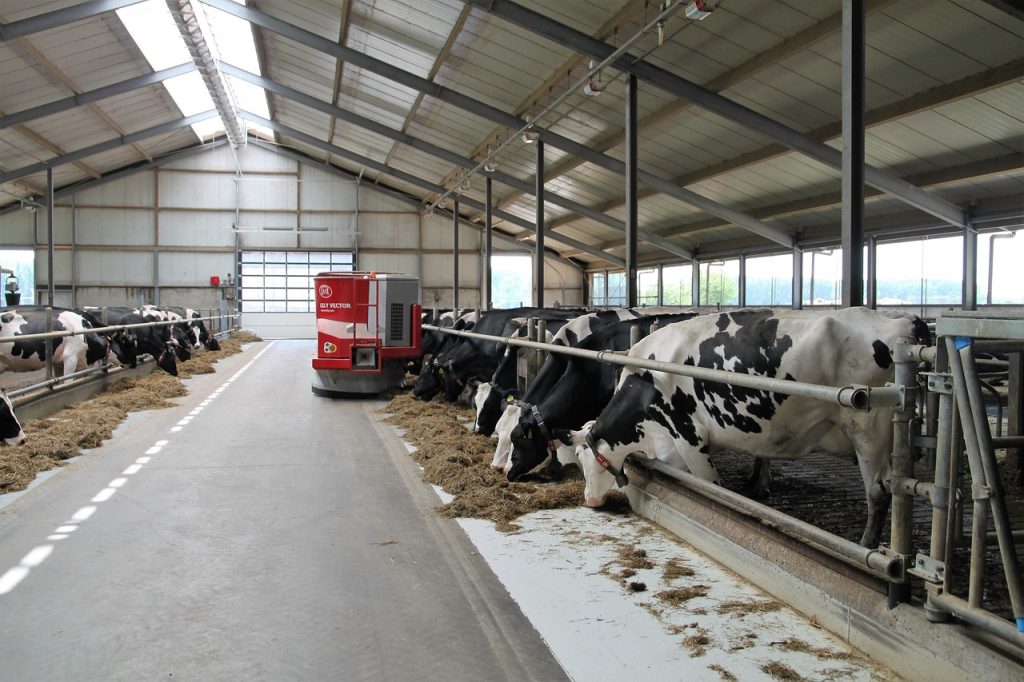All fields are required
Posted in Our Blog,Outbreaks & Recalls on June 12, 2024

Bird flu in people from cows. Now that isn’t something we ever thought we’d hear. But unfortunately, this isn’t the only time this has happened in the recent past. This is the second case where a human has become sick with bird flu that they acquired from a cow, says the Centers for Disease Control and Prevention (CDC).
The current bird flu dairy cow outbreak has caused significant concern in the industry, as the virus affects milk production and the impact on virus in the milk product is not fully known.
Now, a new concern emerges.
Dairy farm worker exposure.
A dairy farm worker in Michigan tested positive for bird flu linked to cow exposure. This person was working on a dairy farm where the highly pathogenic avian influenza (bird flu) H5N1 virus was identified in cows.
When the worker became sick with an eye issue, the suggested protocol for at risk farm workers is to test for influenza with a traditional nasal swab. However, an additional test is also performed to determine if the illness is associated with the regular old flu, something that isn’t flu like a cold or sinus infection, or to see if it might be the dreaded bird flu.
This additional test is performed on a sample taken from the patient’s eye. In both cases, eye symptoms were the only indication of infection.
The nasal swab was negative for influenza virus on this patient.
With few laboratories capable of performing the specialized influenza A(H5) virus (bird flu) test, the eye swab sample was sent to the CDC for analysis, where it tested positive for the virus. An indication of an eye infection and the second instance of bird flu in people from cow exposure.
The Michigan case was nearly a copy and paste from the first that occurred in Texas.
A dairy farm worker for a herd known to have cows associated with the bird flu dairy cow outbreak experienced eye symptoms.
The patient’s nasal swab tested negative for influenza; however, the eye swab was positive.
This first case was a shock, however cases of poultry to human infection have been seen around the world.
Cases of bird flu in people linked to poultry have been popping up all over the world since 2020, with China hitting the news first. Several cases have been reported in China from poultry workers and backyard poultry exposure. Other countries such as Hong Kong, Laos, Spain, Vietnam, Ecuador, and Cambodia.
In the United States, human cases of poultry-to-human exposure have not been reported. However, bird flu has been identified in many different non-poultry animals. Foxes, seals, goats, and other non avian animals have become sick with the virus.
While data is not conclusive, conjunctivitis (eye infection) is the main symptom associated with human bird flu infections.
The CDC suspects this is due to routes of exposure. For example, splashes of contaminated fluid getting into the eye or touching the eye with something that has been contaminated.
“High levels of [bird flu] virus have been found in unpasteurized milk from H5N1-infected cows,” says the outbreak update report. Data suggests this is why dairy cow workers may have greater risk of exposure as opposed to other cow farms. That, and a dairy cow worker presumably interacts more closely with their cows on a daily basis.
The CDC is actively monitoring for cases of bird flu in people through “influenza surveillance systems.” Currently, there has not been an unusual uptick of influenza activity in people.
For now, the agency considers the risk of bird flu in the general public to be a low risk. However, exposure risk in those with close or prolonged, particularly unprotected exposures, to infected birds and other livestock are significantly higher. Those in that category are at the greatest risk of infection.
The CDC has issued a list of recommendations to protect yourself from this emerging threat.
This includes not only poultry and domestic birds, but also wild birds and other wild or domestic animals. Including cows.
For most people, this is as simple as avoiding contact with wild animals and using caution in places like petting zoos or other places you may come in contact with animals. For those with backyard poultry, continued vigilance in handwashing and child supervision is key.
In poultry or dairy farm workers, this could include eye protection and increased sanitation protocols in addition to surveillance activities.
Dairy cows often only show symptoms of reduced milk production. Chickens, on the other hand, often show more symptoms including low egg production, irregular shaped eggs, diarrhea, purple discoloration and swelling, and coughing/sneezing/congestion.
Avoid unprotected exposure to these animals until the animal is cleared of the virus.
The CDC has updated the recommended personal protective equipment for those working in high-risk environments.
These recommendations include fluid-resistant coveralls and aprons, particulate respirators with a minimum of N95 filters, safety goggles or face shield (if there is risk of liquid splashing onto the respirator, rubber boots or covers, head/hair cover, and gloves.
The current stance is that the suspected risk of becoming sick with bird flu from pasteurized milk is low. However, the CDC continues to monitor this situation.
If you’d like to know more about food safety topics in the news, like “Bird Flu in People from Cows? CDC Reports Second Case of Bird Flu Tied to the Dairy Cow Outbreak! “, check out the Make Food Safe Blog. We regularly update trending topics, foodborne infections in the news, recalls, and more! Stay tuned for quality information to help keep your family safe, while The Lange Law Firm, PLLC strives to Make Food Safe!
By: Heather Van Tassell (contributing writer, non-lawyer)